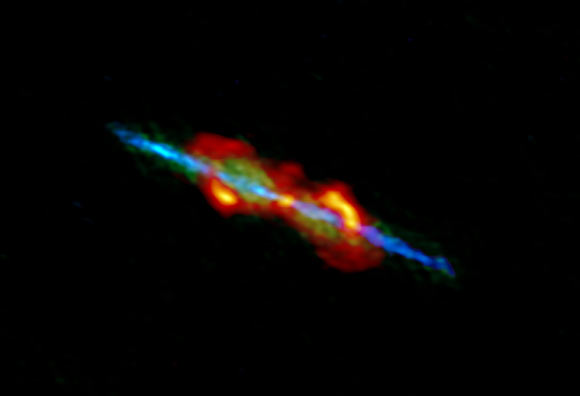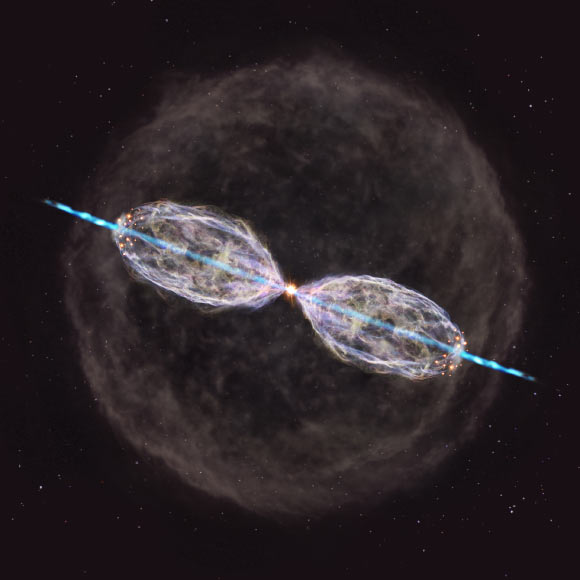ALMA Captures Bipolar Planetary Nebula in the Making | Astronomy – Sci-News.com
W43A, an aged star located some 7,000 light-years away in the constellation Aquila, ejected high-speed bipolar jets less than 60 years ago, according to new research published in the Astrophysical Journal Letters.
“Sun-like stars evolve to puffed-up red giants in the final stage of their lives. Then, the star expels gas to form a remnant called a planetary nebula,” said Dr. Daniel Tafoya, an astronomer at Chalmers University of Technology, Sweden, and colleagues.
“There is a wide variety in the shapes of planetary nebulae: some are spherical, but others are bipolar or show complicated structures.”
“Astronomers are interested in the origins of this variety, but the thick dust and gas expelled by an old star obscure the system and make it difficult to investigate the inner-workings of the process.”
To tackle this problem, the astronomers used the Atacama Large Millimeter/submillimeter Array (ALMA) to observe W43A.
Thanks to ALMA’s high resolution, they obtained a very detailed view of the space around W43A.
“The most notable structures are its small bipolar jets,” Dr. Tafoya said.
The researchers found that the velocity of the jets is about 175 km/sec (109 miles/sec), which is much higher than previous estimations.
Based on this speed and the size of the jets, they calculated the age of the jets to be less than a human lifespan.

ALMA image of the W43A system; the high-velocity bipolar jets ejected from the central aged star are seen in blue, low velocity outflow is shown in green, and dusty clouds entrained by the jets are shown in orange. Image credit: ALMA / ESO / NAOJ / NRAO / Tafoya et al.
“Considering the youth of the jets compared to the overall lifetime of a star, it is safe to say we are witnessing the exact moment that the jets have just started to push through the surrounding gas,” Dr. Tafoya said.
“The jets carve through the surrounding material in as little as 60 years. A person could watch their progress throughout their lifetime.”
The ALMA image clearly maps the distribution of dusty clouds entrained by the jets, which is telltale evidence that it is impacting on the surroundings.
“This entrainment could be the key to forming a bipolar-shaped planetary nebula,” the scientists said.
“In our scenario, the aged star originally ejects gas spherically and the core of the star loses its envelope.”
“If the star has a companion, gas from the companion pours onto the core of the dying star, and a portion of this new gas forms the jets.”
“Therefore, whether or not the old star has a companion is an important factor to determine the structure of the resulting planetary nebula.”
“W43A is one of the peculiar so-called ‘water fountain’ objects,” said Dr. Hiroshi Imai, a researcher at Kagoshima University.
“These are old stars which show characteristic radio emission from water molecules. Our ALMA observations lead us to think that the water heated to generate the radio emission is located the interface region between the jets and the surrounding material.
“Perhaps all these ‘water fountain’ sources consist of a central binary system which has just launched a new, double jet, just like W43A.”
_____
Daniel Tafoya et al. 2020. Shaping the Envelope of the Asymptotic Giant Branch Star W43A with a Collimated Fast Jet. ApJL 890, L14; doi: 10.3847/2041-8213/ab70b8







